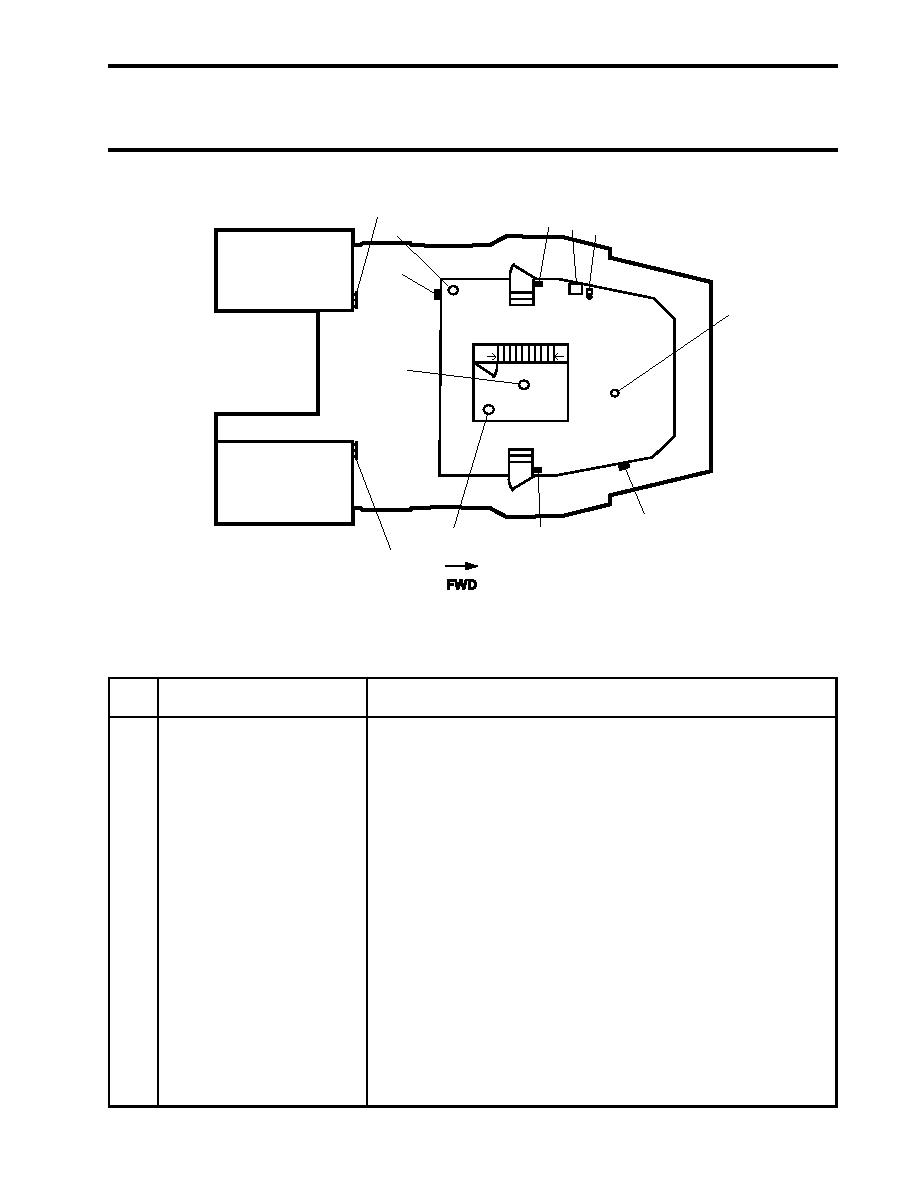 |
|||
|
|
|||
|
Page Title:
DESCRIPTION AND USE OF OPERATOR CONTROLS AND INDICATORS |
|
||
| ||||||||||
|
|
 TM 55-1925-292-14&P
OPERATOR, UNIT, DIRECT SUPPORT, AND GENERAL SUPPORT MAINTENANCE
FIREFIGHTING, FIRE ALARM, AND FIRE SUPPRESSION SYSTEMS FOR
INLAND AND COASTAL LARGE TUG (LT)
DESCRIPTION AND USE OF OPERATOR CONTROLS AND INDICATORS
02 LEVEL GENERAL ARRANGEMENT
1
4
5
6
3
2
R
I
3
DN
UP
2
I
I
RADIO
ROOM
X
PILOTHOUSE
7
4
8
1
Figure 1. 02 Level General Arrangement
Table 1. 02 Level General Arrangement (refer to figure 1)
Key
Control/Indicator
Function
1
Engine Room Ventilation and
PULL these T handle controls to actuate the engine room ventilation
Main Engine Combustion Air
and main engine comustion air fire flaps.
Fire Flap T Handles
2
Fire Station 11 Cutoff Valve
This valve controls the raw water supply to fire station 11.
3
Ionization Smoke Detectors
These detectors sense the presence of smoke in the protected
spaces.
4
Fire Alarm Pull Station
This provides the crew with the means to manually activate the fire
(refer to table 5)
alarm system.
5
Remote Indicating Panel
This panel provides the bridge crew with an indication in which zone
(refer to table 6)
the alarm condition is located.
6
Pilothouse Bell
The bell provides an independent audible indication of a fire alarm
condition.
7
Fire Station 10 Cutoff Valve
This valve controls the raw water supply to fire station 10.
8
Fire Alarm Beacon (red)
The beacon provides an independent visual indication of a fire alarm
condition.
0004 00-1
|
|
Privacy Statement - Press Release - Copyright Information. - Contact Us |